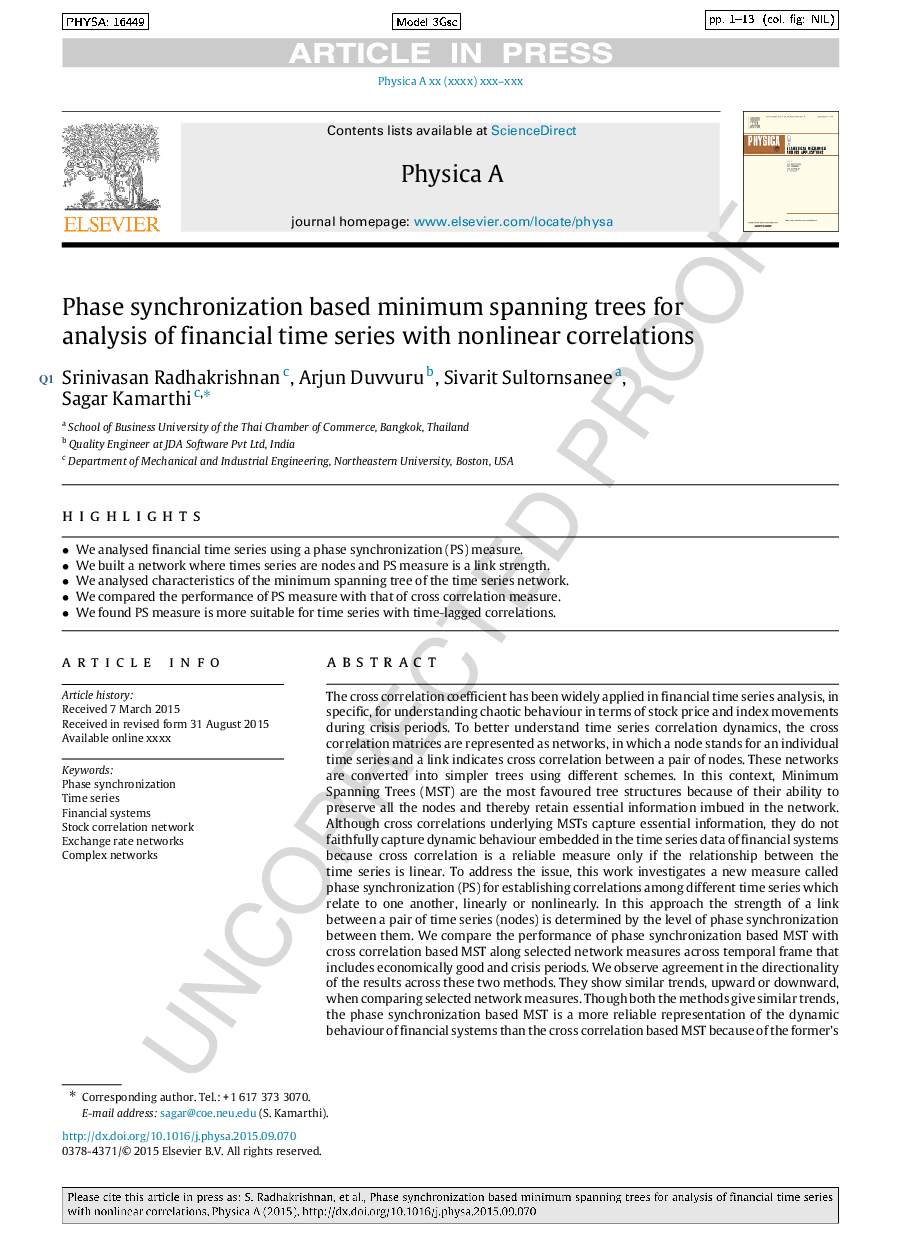| Article ID | Journal | Published Year | Pages | File Type |
|---|---|---|---|---|
| 7378579 | Physica A: Statistical Mechanics and its Applications | 2016 | 13 Pages |
Abstract
The cross correlation coefficient has been widely applied in financial time series analysis, in specific, for understanding chaotic behaviour in terms of stock price and index movements during crisis periods. To better understand time series correlation dynamics, the cross correlation matrices are represented as networks, in which a node stands for an individual time series and a link indicates cross correlation between a pair of nodes. These networks are converted into simpler trees using different schemes. In this context, Minimum Spanning Trees (MST) are the most favoured tree structures because of their ability to preserve all the nodes and thereby retain essential information imbued in the network. Although cross correlations underlying MSTs capture essential information, they do not faithfully capture dynamic behaviour embedded in the time series data of financial systems because cross correlation is a reliable measure only if the relationship between the time series is linear. To address the issue, this work investigates a new measure called phase synchronization (PS) for establishing correlations among different time series which relate to one another, linearly or nonlinearly. In this approach the strength of a link between a pair of time series (nodes) is determined by the level of phase synchronization between them. We compare the performance of phase synchronization based MST with cross correlation based MST along selected network measures across temporal frame that includes economically good and crisis periods. We observe agreement in the directionality of the results across these two methods. They show similar trends, upward or downward, when comparing selected network measures. Though both the methods give similar trends, the phase synchronization based MST is a more reliable representation of the dynamic behaviour of financial systems than the cross correlation based MST because of the former's ability to quantify nonlinear relationships among time series or relations among phase shifted time series.
Related Topics
Physical Sciences and Engineering
Mathematics
Mathematical Physics
Authors
Srinivasan Radhakrishnan, Arjun Duvvuru, Sivarit Sultornsanee, Sagar Kamarthi,
